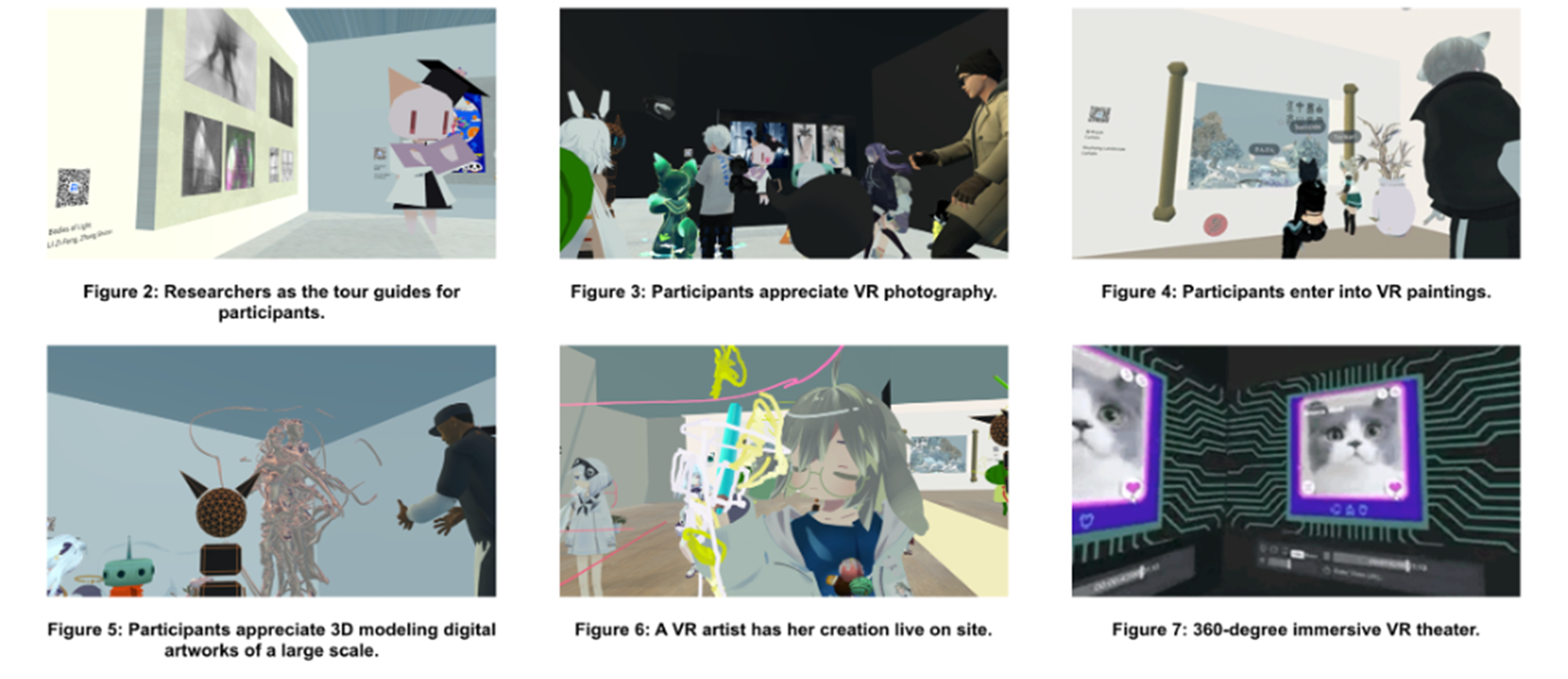In this section, we present our findings mainly in two folds. First, to answer RQ1, we report three themes
about the promises and three themes about the challenges of virtual exhibitions identified by the expert interviewees,
along with the strategies recommended by the interviewees to answer RQ2).
Promises:
1. Free of Physical Limitations.
2. Enhanced Experiences in Appreciating Born- Digital Artworks.
3. Creating Social Experiences via Novel Interaction Techniques.
Challenges:
1. Lack of Adaptation Strategies When Replicating Physical Exhibitions.
2. Technical Issues for Both Curators and Audiences.
3. Lack of Highlights in the Unique Benefits of Virtual Exhibitions.
Design Guidelines (DGs):
● DG1: Adopt interaction and navigation techniques similar to real life so that audiences can adapt to the 3D graphical environments with less discomfort.
● DG2: Prioritize mediums that can be best interacted with in the VR environment, e.g., VR paintings, interactive 3D models, etc.
● DG3: Make adaptations when learning from physical exhibitions, such as avoiding branching or return routes to reduce spatial disorientation in VR.
For more design guidelines, please refer to our full paper.



